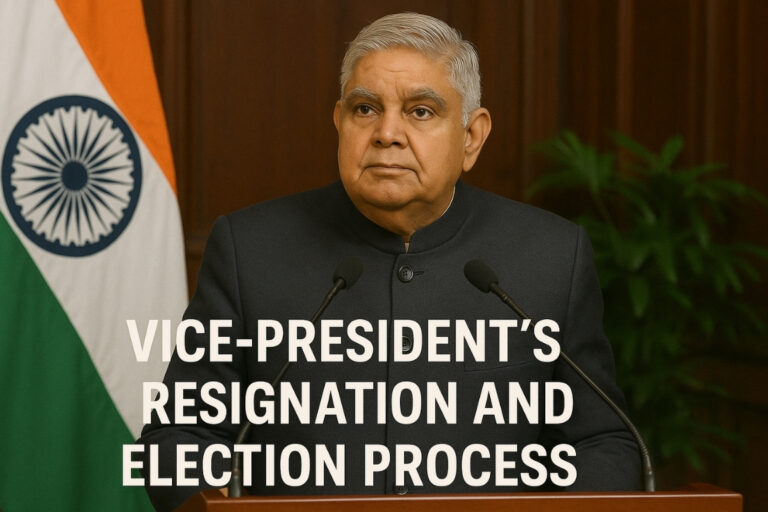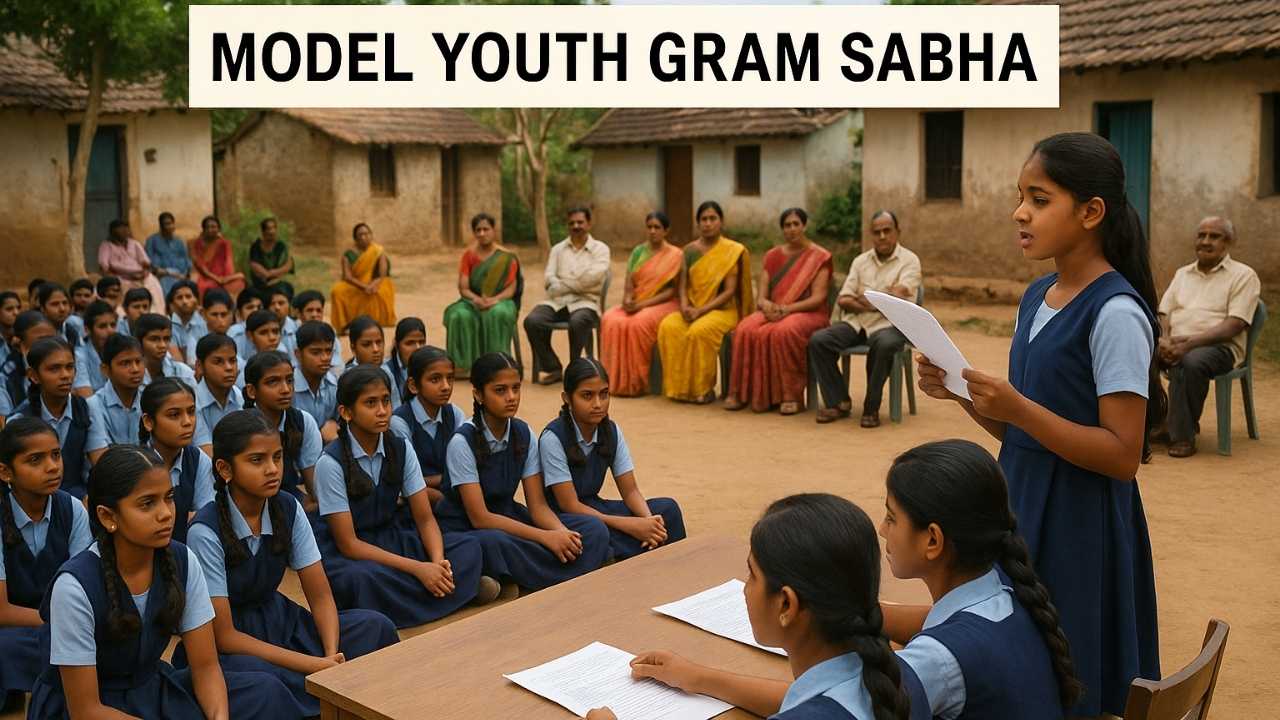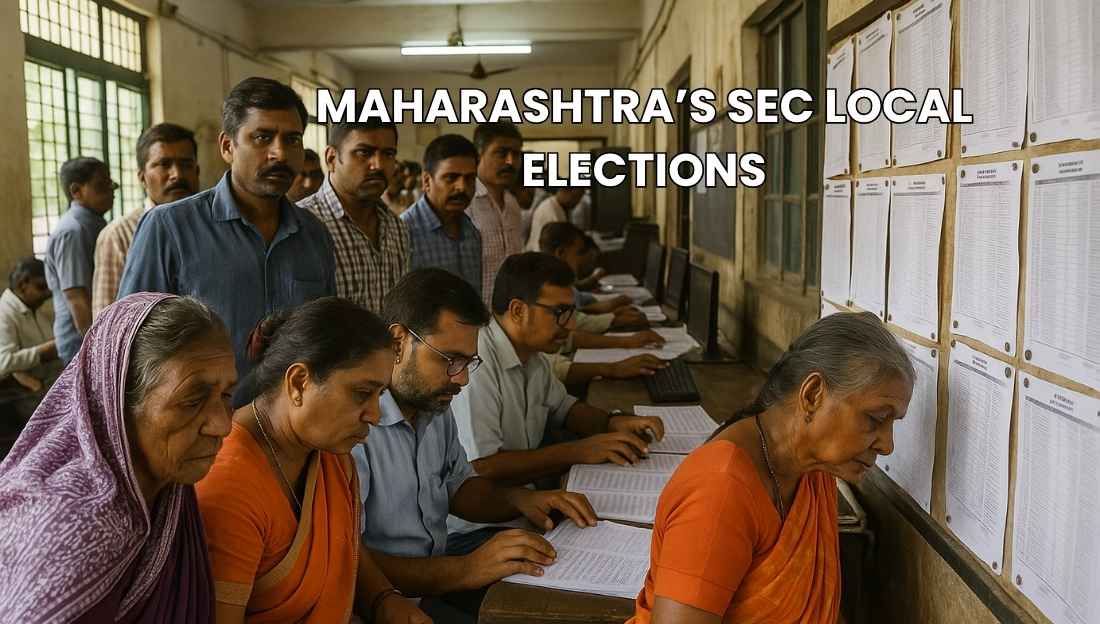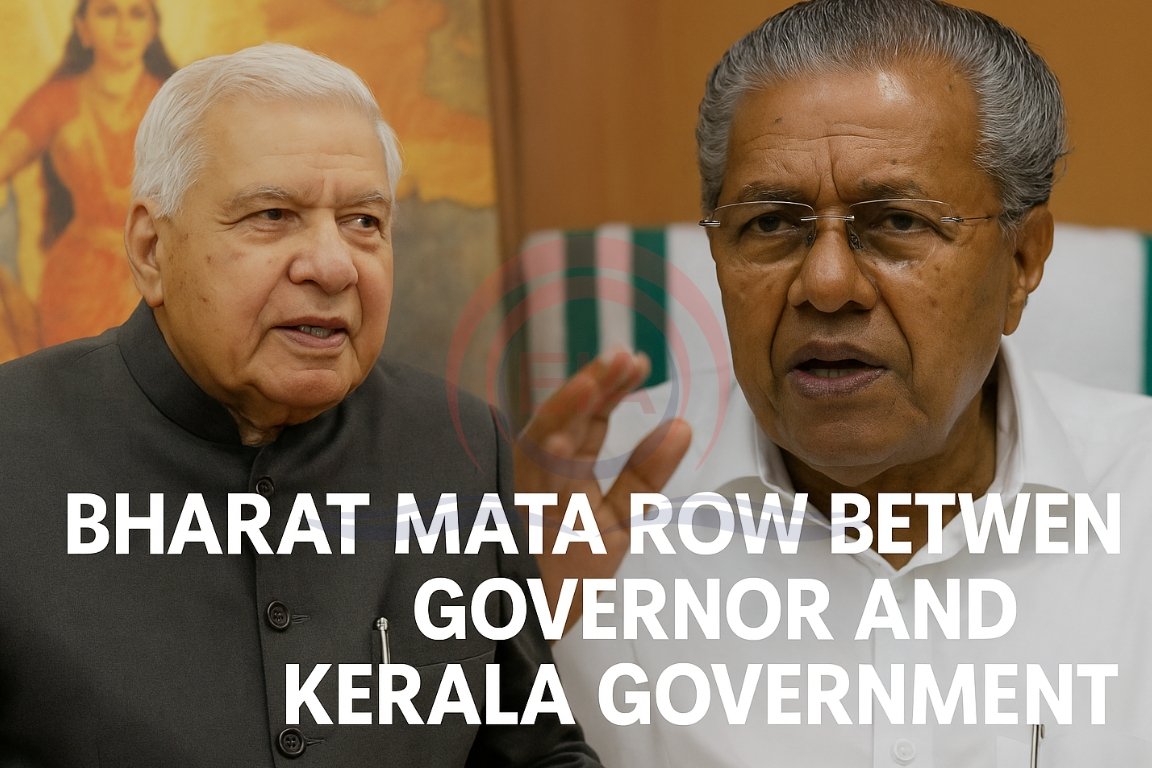Vice-President Jagdeep Dhankhar resigned citing health reasons, creating a rare mid-term vacancy. The Election Commission is now constitutionally required to conduct fresh elections immediately to fill the post.
Background on the Vice-President’s Role
- The Vice-President of India is also the ex-officio Chairman of the Rajya Sabha (Upper House of Parliament).
- He holds office for five years but continues in position until a successor is elected.
- The Constitution does not provide any succession method in case of resignation, removal, or death, other than a fresh election.
Constitutional Provisions for Election
- Article 66(1) of the Constitution governs the election of the Vice-President.
- The election is conducted through proportional representation by means of a single transferable vote system, using a secret ballot.
- Unlike the Presidential election, each vote has equal value in this case.
Electoral College Composition
- Comprises elected and nominated members of both the Lok Sabha and Rajya Sabha.
- State legislatures are not part of the Vice-Presidential election.
- Party whips do not apply, allowing members to vote as per their choice.

Election Procedure
- Nomination must have at least 20 proposers and 20 seconders (all electors).
- A security deposit of ₹15,000 is required.
- Returning Officer is typically the Secretary-General of either House (on rotation).
- Two senior officials serve as Assistant Returning Officers.
- The Election Commission must initiate the process immediately to avoid a constitutional vacancy.
Temporary Arrangement
- Until a new Vice-President is elected, the Deputy Chairman of Rajya Sabha presides over House proceedings.
Conclusion:
The Constitution mandates the timely election of a new Vice-President to avoid vacancy in this crucial constitutional role, reflecting the importance of continuity in India’s parliamentary system.





